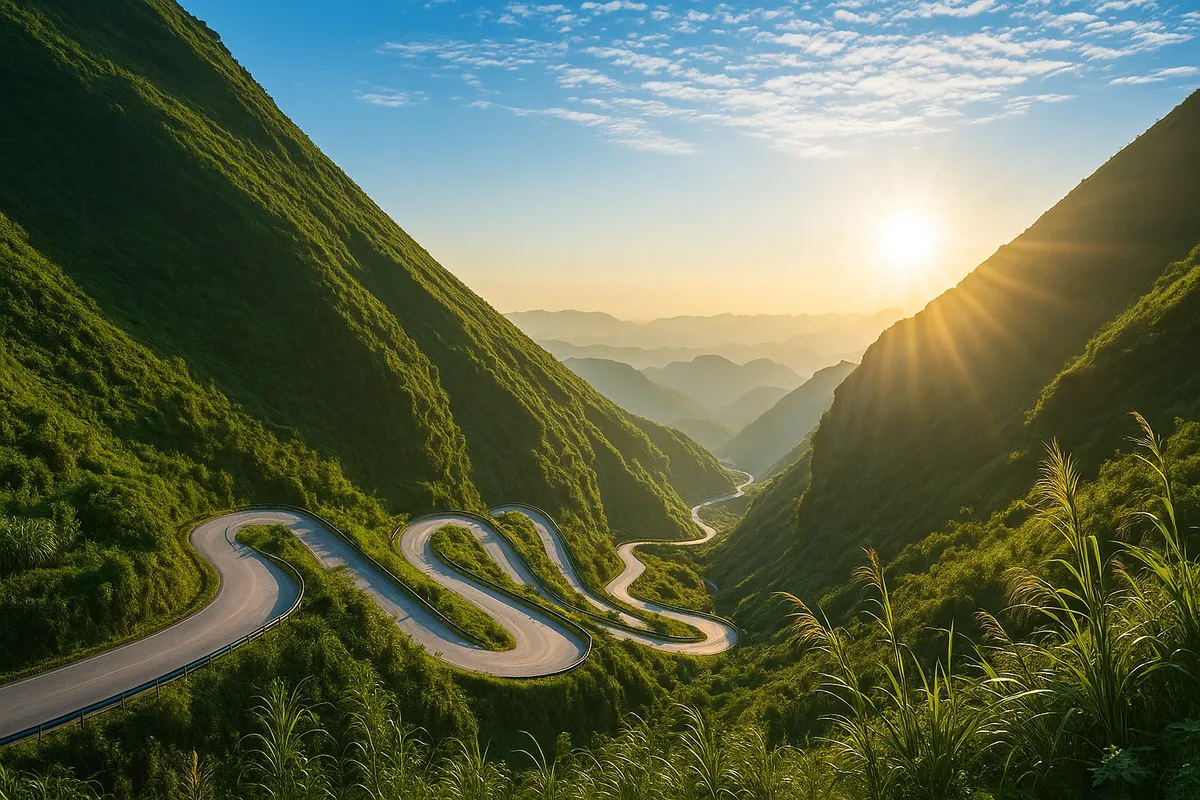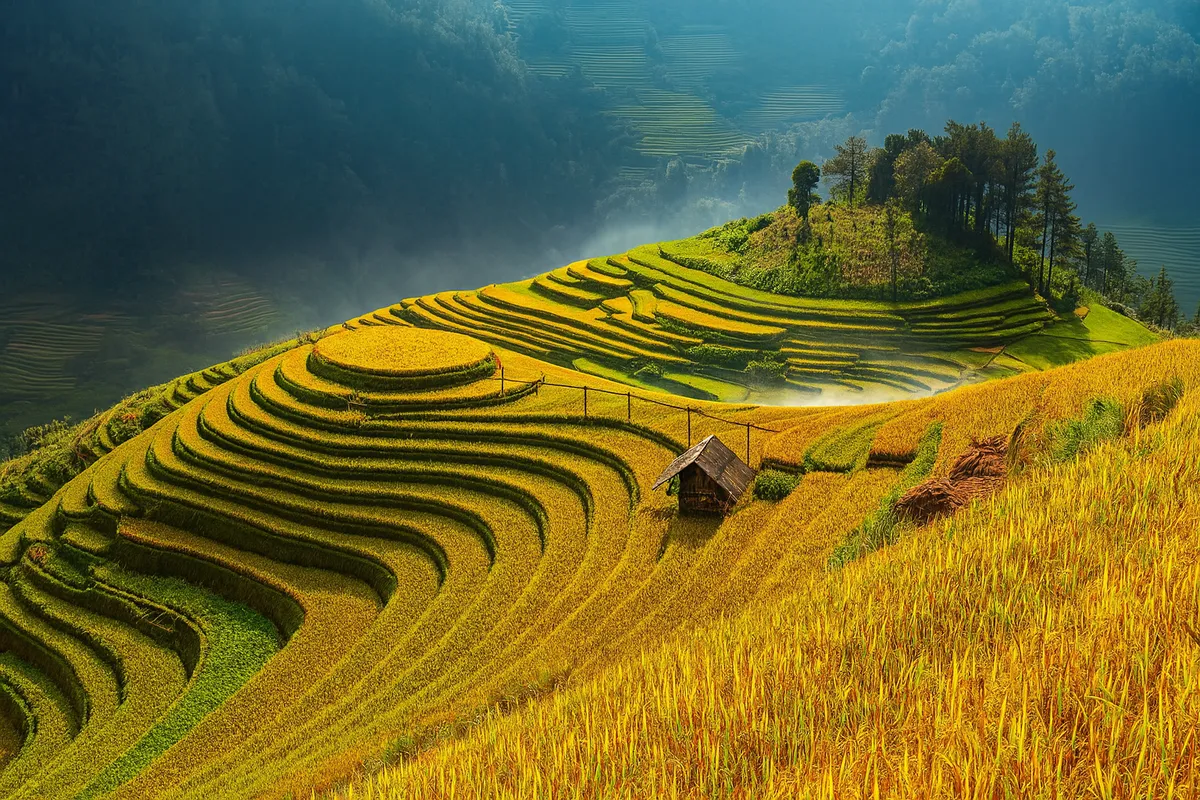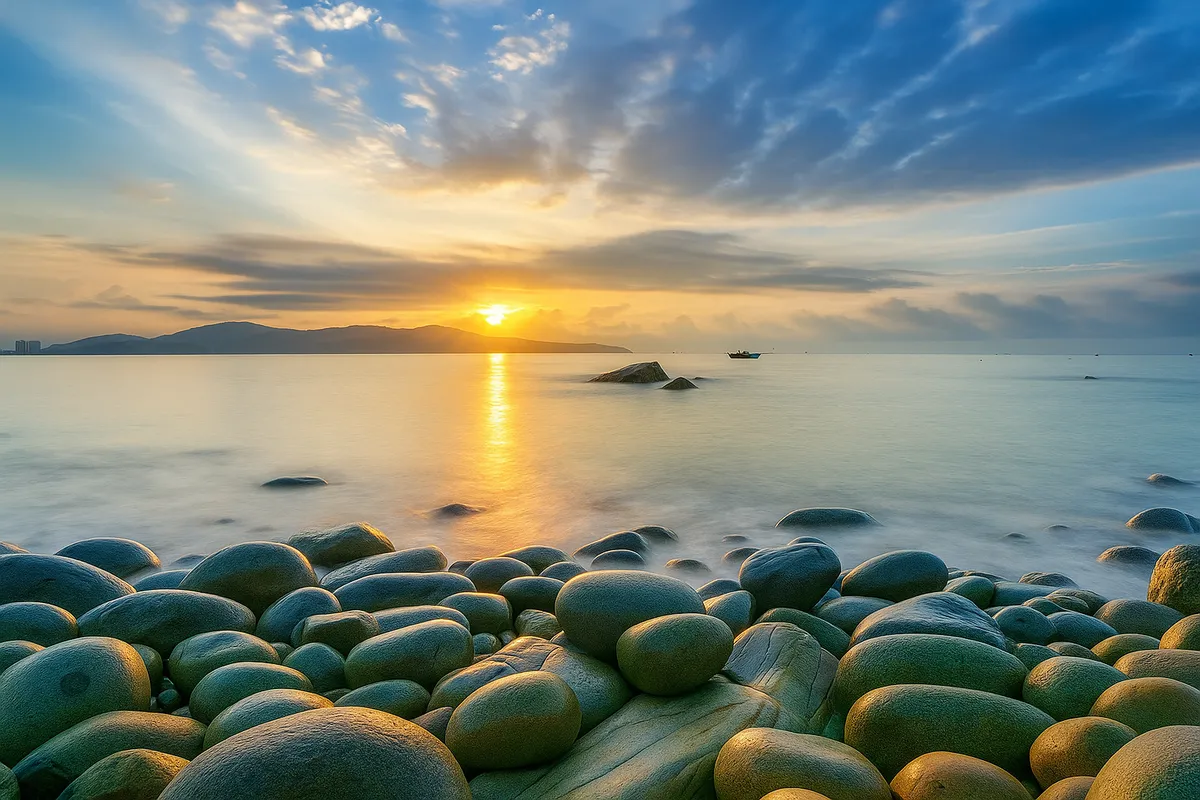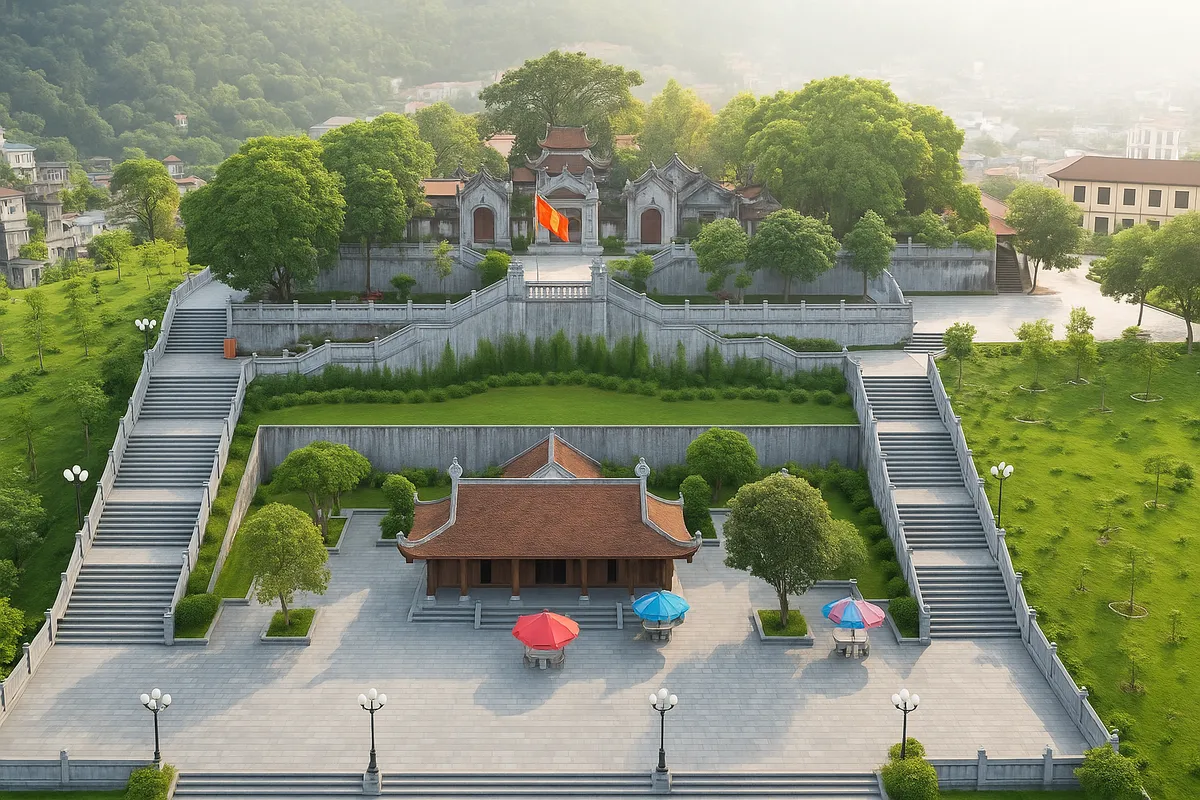Ma Pi Leng Pass - A strip of stone silk between the clouds and sky of Ha Giang
- Tuesday, May 20, 2025, 11:03 (GMT+7)
Ma Pi Leng Pass - A strip of stone silk between the clouds and sky of Ha Giang
Ma Pi Leng Pass, a name that echoes like a haunting melody from the northern frontier, captivates every traveler's soul amid the vast skies and mountains. Stretching across the Happiness Road that connects Ha Giang City with Dong Van and Meo Vac, Ma Pi Leng is not only a symbol of rugged terrain but also a powerful imprint of a land where nature, history, and culture merge into an everlasting epic.
From the very first glance, Ma Pi Leng awakens every sense. The road winds like a ribbon of stone around the mountains, floating in white clouds, hugging the deep emerald gorge of the Nho Que River that mirrors the eyes of a Hmong maiden. Among this natural palette, layers of grey limestone rise skyward like wild horns, once the seabed millions of years ago. Winds whistle through the crevices, carrying distant echoes of those who braved danger to build the legendary Happiness Road.
What makes Ma Pi Leng extraordinary is not just its elevation of nearly 1,200 meters or the hairpin bends that challenge even the most skilled drivers, but the story of the people who forged it. Over three years, thousands of young workers carved through the mountains, clung to sheer cliffs, and many gave their lives to secure each meter of road along the perilous slopes. Here, the Ma Pi Leng miracle is more than an engineering feat. It is a symbol of human will and the Vietnamese spirit to conquer nature. Remnants of the construction brigade, along with memorial stones embedded in the gray rocks, quietly recount a tale of blood and sweat.
Nature at Ma Pi Leng Pass is unlike any other place. As the seasons pass, every moment resembles a living painting. Spring brings peach and plum blossoms to the hillsides, mud-walled homes appear between blossoms, and the Hmong flute lingers on the wind. In summer, clouds encircle the mountain peaks, golden sunlight dances on embroidered skirts, and smoke curls from cooking fires across villages. Autumn dresses the highlands in a gentle breeze and soft sunshine, while winter’s piercing cold renders the rocky fields even more haunting, with silver mist weaving through vertical cliffs. "Touching Ma Pi Leng is to understand what it means for nature to be breathtakingly majestic," many young travelers share on Instagram, along with iconic check-in photos from the Panorama summit overlooking the winding Nho Que River.
Some have likened the Nho Que below the pass to a strip of jade silk flowing through the wilderness. Its water changes hues with the sunlight, from deep green to turquoise, flanked by rocky banks and wild grasses. Small boats glide downstream, squeezing through narrow gaps like fingers between towering cliffs. Sunbeams slant through morning mist, creating a surreal yet serene spectacle. In certain segments, the river curves around rock walls, forming Tu San Alley, the deepest canyon in Southeast Asia, a place once submerged beneath an ancient sea and now only accessible by boat or narrow paths carved into cliffs.
Beyond the scenery, Ma Pi Leng preserves rich cultural values of the Hmong, Dao, and Tay communities living along the mountain slopes. Their flutes, colorful skirts, and bustling highland markets emerge through the fog, where people trade not only goods but smiles, glances, and everyday stories. Legend has it the name “Ma Pi Leng” in Hmong means “horse’s nose bridge,” depicting a slope so steep it could make a horse breathless. Locals also believe those who conquer all the pass’s curves will find fortune in their journey through the land of stone.
Climbing Ma Pi Leng feels like stepping into a realm of memory. Many travelers have shared reunions and partings atop the windy summit, where just standing still feels like the sky leans gently toward you. Some speak of sunrises rising from the valley, golden rays piercing the mist and casting sparkling light on the mountain rocks, a beauty that stirs the heart. When sunset descends, clouds curl around the peaks, and the world narrows to the sound of the wind and the beating heart of the one gazing out.
A little known secret lies at the foot of the pass, where traces of ancient caves and fossilized cliffs still remain. This is evidence of a prehistoric era, where marine fossils have been found in limestone rocks. The entire Ma Pi Leng range is part of the Dong Van Karst Plateau Global Geopark, recognized by UNESCO, where every stone holds millions of years of history.
Coming to Ma Pi Leng is not just about sightseeing. It is a journey of self-discovery in the immensity of earth and sky. There is a sense of freedom when standing atop the pass, eyes stretching toward endless roads weaving through cliffs, rooftops nestled on hillsides, clouds drifting like distant dreams. Many come here to slow down, to cleanse the burdens of city life, to fill their lungs with the scent of stone, wind, and the chill of the highlands.
When planning a trip to Ma Pi Leng, the ideal time is during the dry season, from September to April. The weather is cool with light sun and minimal rain, clouds swirl to create a mythical scene. The most common route is from Ha Giang City, following Highway 4C about 150 kilometers through Quan Ba, Yen Minh, and Dong Van. Motorbikes or private cars offer flexibility but require careful preparation due to steep slopes and sharp curves. Sleeper buses from Hanoi are also popular, with vehicle rentals in Ha Giang City for those wanting to explore the full Happiness Road.
An experience not to be missed is sailing along the Nho Que River in a small boat through Tu San Canyon, feeling the magnificence of rock formations, hearing the murmur of water in the wilderness. Highland cuisine also leaves a lasting impression, with rustic dishes like thang co, men men, buckwheat cakes, black pig meat, and corn wine brewed with forest herbs, rich in mountain flavor. Visitors are also drawn to vibrant weekend markets, where every Sunday, the Hmong, Dao, and Lo Lo people bring springtime in their costumes and exchange stories in the misty morning bustle.
Important travel tips for Ma Pi Leng include prioritizing safety, especially when riding motorbikes. Mountain roads are winding and steep, with fog often appearing in the early morning or late afternoon. Avoid traveling during rainy weather or storms. Wear warm clothes and sturdy shoes, pack a lightweight raincoat and a good camera to capture unforgettable moments. Respect the natural environment and the lifestyle of local communities. Avoid littering, making loud noise, or disturbing the surroundings. Travel responsibly and live in harmony with each step you take.
“To touch the white clouds and hear the wind tell stories of a thousand years” is a feeling found only at Ma Pi Leng Pass. Even one visit is enough to remember the lush green of the Nho Que River, the cold gray of stone under open skies, and the smiles of highland people. Sometimes, simply sitting quietly on the summit, breathing deeply and letting your heart settle in the wind, is enough to turn every worry into a drifting cloud.
Ma Pi Leng is more than just a mountain pass. It is a keeper of dreams, a place where people rediscover peace and pride in the magnificent beauty of their homeland. Let your heart guide the way. Let each step be a journey of discovery and a vivid memory carved into your soul.

 CHECKIN.VN
CHECKIN.VN








Share on